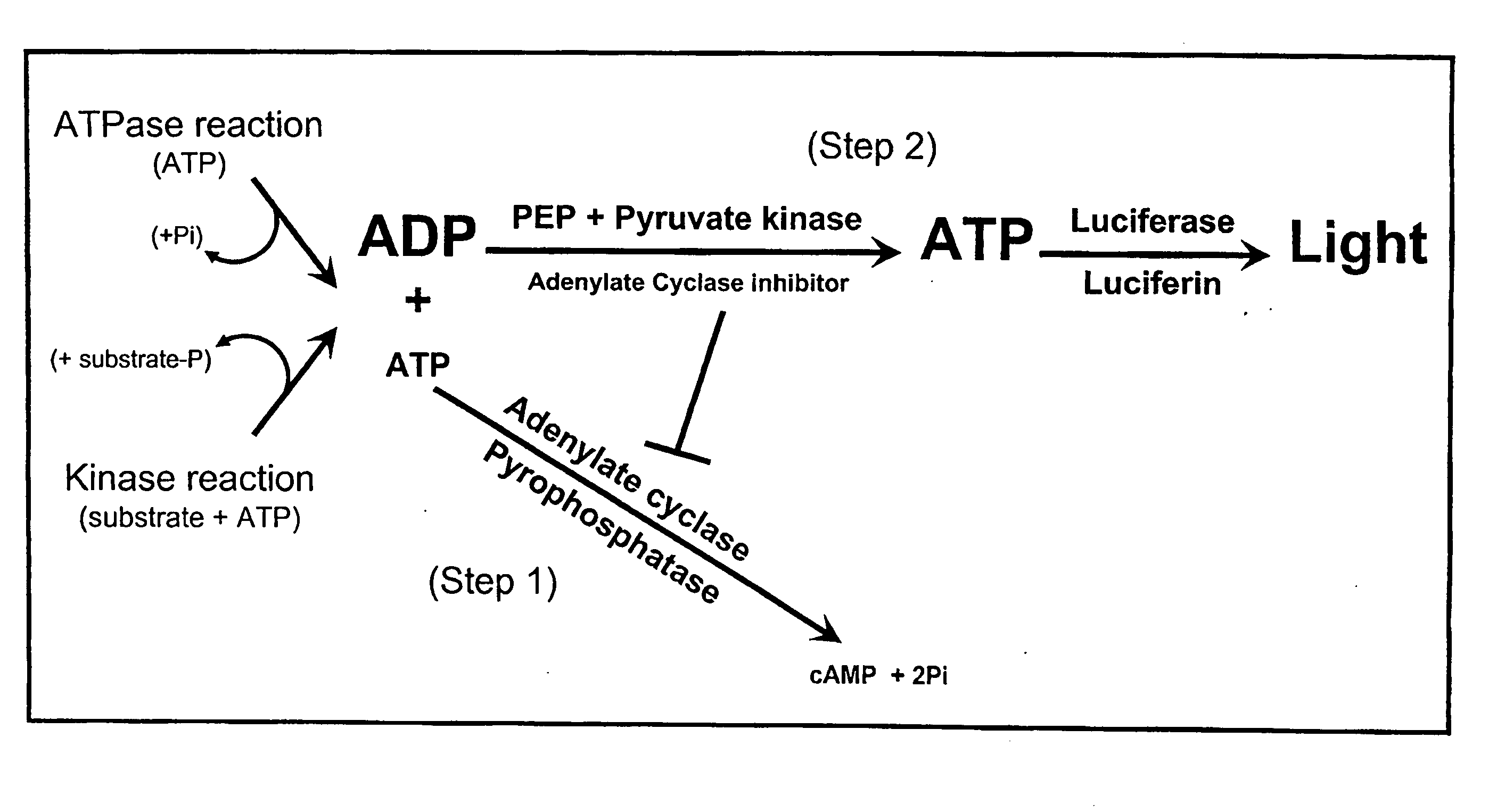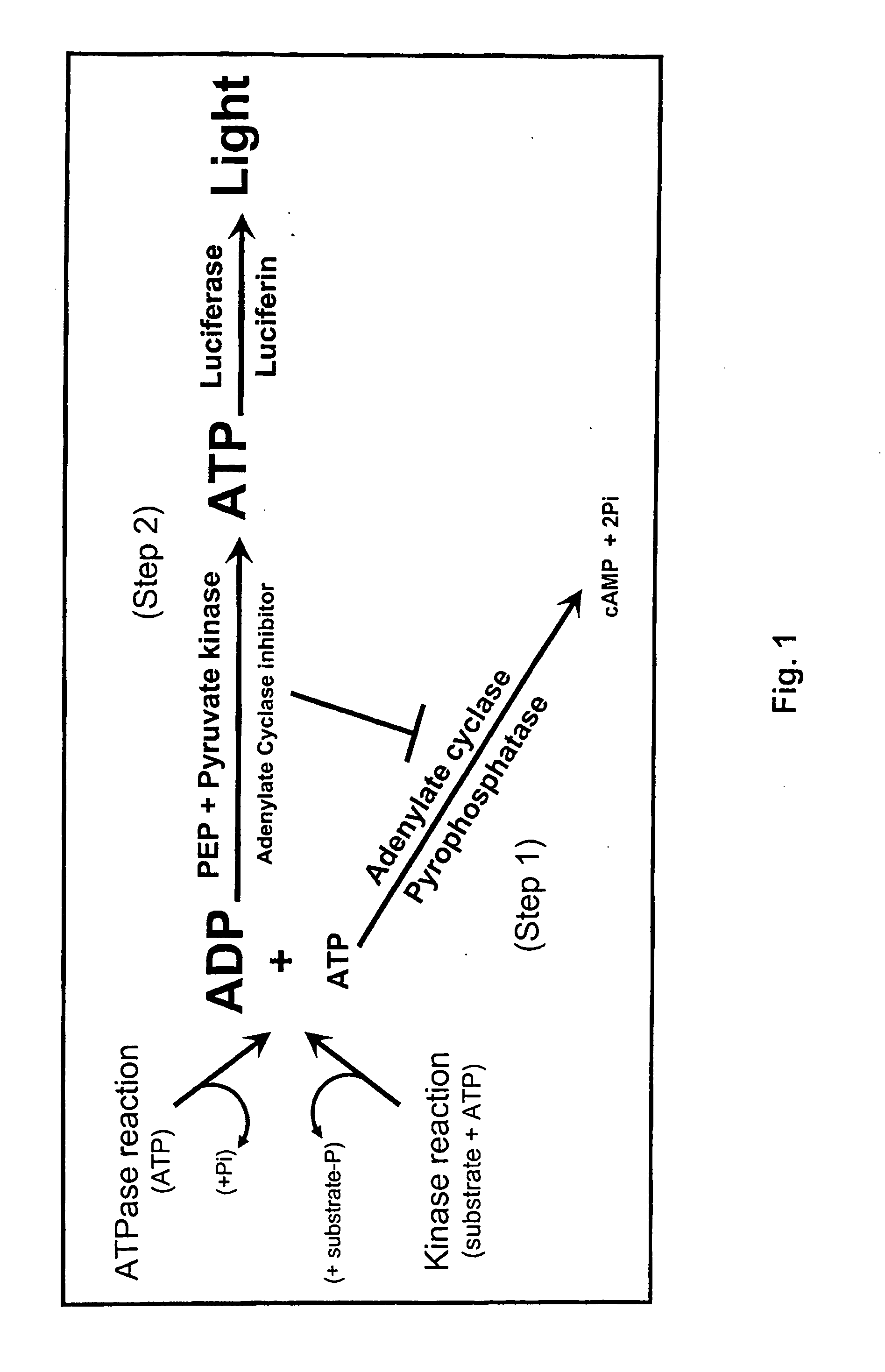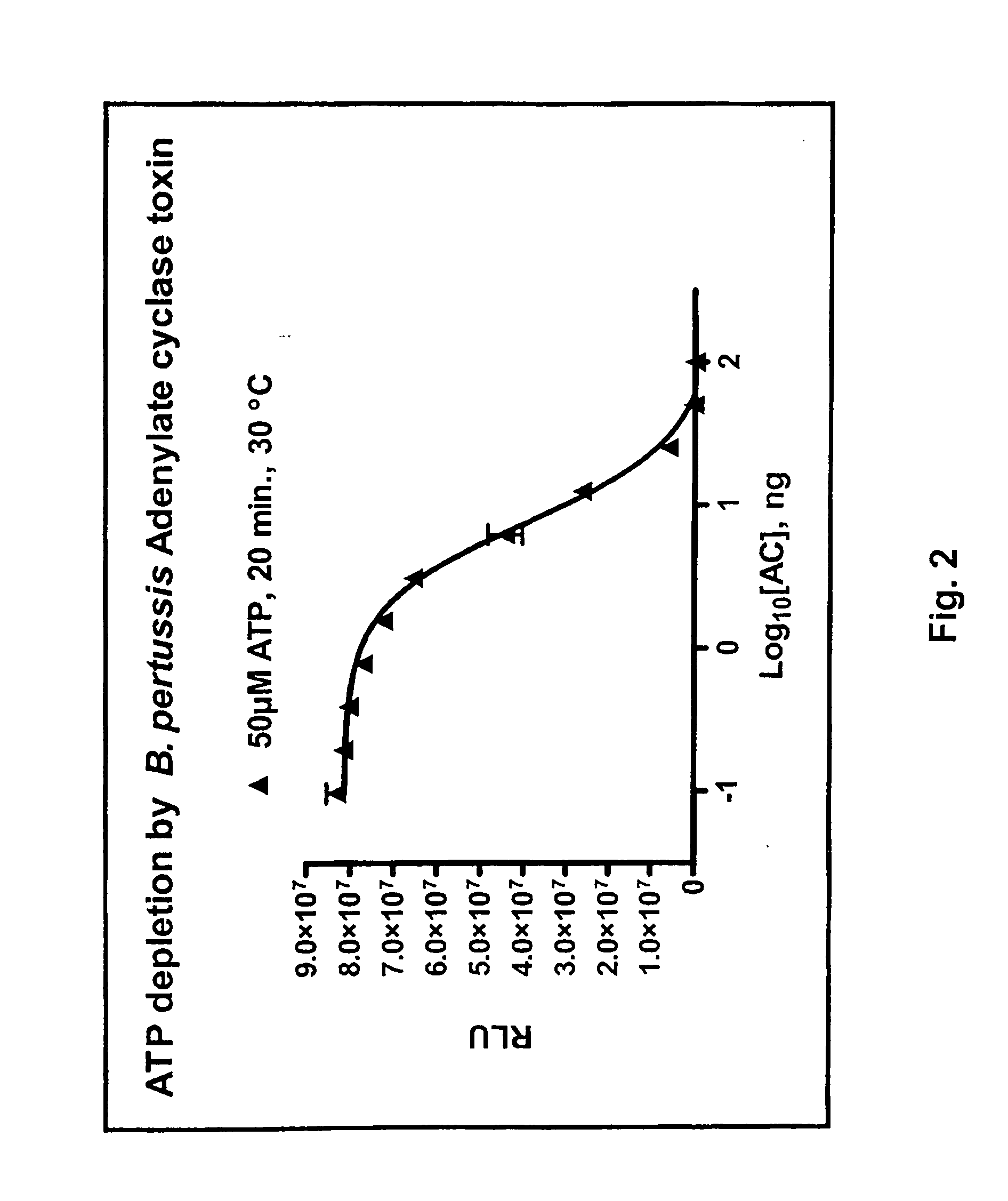ADP detection based luminescent phosphotransferase or ATP hydrolase assay
- Summary
- Abstract
- Description
- Claims
- Application Information
AI Technical Summary
Benefits of technology
Problems solved by technology
Method used
Image
Examples
example
Materials
[0127]Pyruvate kinase from rabbit muscle (Sigma Catalog number P9136), myokinase from chicken muscle (Sigma Catalog number M5520), myokinase from rabbit muscle (Sigma Catalog number M3003), creatine phosphokinase from bovine heart (Sigma Catalog number C7886), creatine phosphokinase from rabbit brain (Sigma Catalog number C6638), and creatine phosphokinase from rabbit muscle (Sigma Catalog number C3755) were obtained from Sigma.
Methods
[0128]Adenylate cyclase assay and inhibition. Activity of various adenylyl cyclases (ACs) was measured at 30° C. for 30 minutes in the presence of 60 mM Tris pH 7.5, 10 mM MgCl2, 40 nM calmodulin and variable ATP concentrations. Except for those experiments related to AC titration, 100 ng of the AC was used. When used, the calmodulin antagonists were prepared according to the manufacturer's recommendation and were added directly to the AC reaction when direct inhibition was assessed or to the reaction converting ADP to ATP to assess AC inhibit...
PUM
| Property | Measurement | Unit |
|---|---|---|
| Bioluminescence | aaaaa | aaaaa |
Abstract
Description
Claims
Application Information
 Login to View More
Login to View More - R&D
- Intellectual Property
- Life Sciences
- Materials
- Tech Scout
- Unparalleled Data Quality
- Higher Quality Content
- 60% Fewer Hallucinations
Browse by: Latest US Patents, China's latest patents, Technical Efficacy Thesaurus, Application Domain, Technology Topic, Popular Technical Reports.
© 2025 PatSnap. All rights reserved.Legal|Privacy policy|Modern Slavery Act Transparency Statement|Sitemap|About US| Contact US: help@patsnap.com



